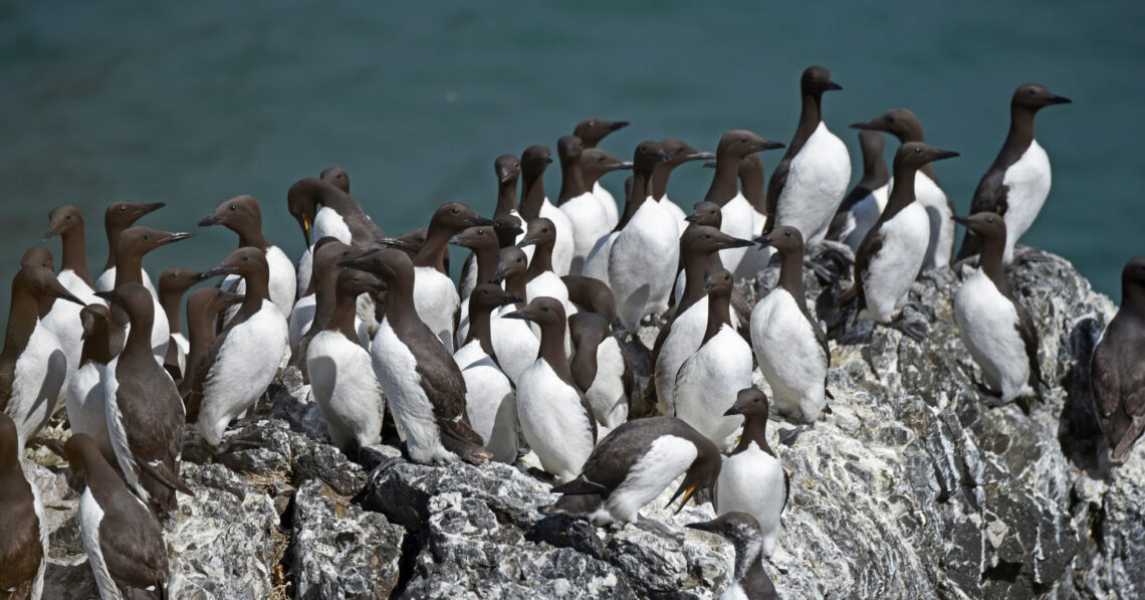
(Photo credit: Bree Drummond/Nora Rojek/U.S. Fish and Wildlife Service)
Scientists have identified the largest mass die-off of a single species in modern times: 4 million common murres (Uria aalge) died during a severe marine heatwave known as “The Blob” that lasted for about two years from 2014 to 2016.
Often compared to flying penguins for their striking black and white plumage, these seabirds once roamed rocky coastlines, dove into cold waters for fish and nested in crowded colonies. But now their vibrant presence has faded, revealing their harsh vulnerability.
After the emergence of the Drop, these symbolic colonies were sharply reduced, and at present, the numbers of some populations are only a quarter of their previous levels.
The destruction began in late 2014, when the Blob took up residence in the northeastern Pacific Ocean. Ocean temperatures rose 7 degrees Fahrenheit (about 4 degrees Celsius), disrupting the entire ecosystem. Phytoplankton, the foundation of the marine food web, declined, triggering a catastrophic collapse of forage fish, the murres’ main food source.
By 2015 and 2016, starvation had taken hold of murre populations, and beaches from Alaska to California were littered with carcasses. Researchers from the University of Washington’s Coastal Observation and Seabird Research team recorded 62,000 murre deaths in a single year. In some areas, strandings were 1,000 times higher than normal, a shocking figure that highlights the scale of the crisis.

A group of Common Murres at a breeding colony in Alaska.
Still, the true extent of the disaster remained unclear until a recent study by Heather Renner, a wildlife biologist with the U.S. Fish and Wildlife Service. In their study, published Dec. 12 in the journal Science, the team used decades of colony-based research to paint an alarming picture: The Blob killed an estimated 4 million murres — half of Alaska’s murre population.
In the Gulf of Alaska, murre colonies were reduced in size by 50%, and in the eastern Bering Sea, losses reached a devastating 75%, the team found. “We knew right away that this was a significant, unprecedented die-off,” Renner said in a statement. “We just didn’t know how big it was.”
The death toll was four to eight times greater than initial estimates, making it one of the largest deaths of a single wildlife species ever recorded.
“To put that into context,” Renner said, “the number of common murres killed is about 15 times greater than the number of seabirds killed in the Exxon Valdez oil spill, an environmental disaster of epic proportions.”
Seven years after the heatwave, there is still no sign of recovery. Renner’s team continues to monitor seabird colonies, but the outlook remains grim. The images accompanying the study provide stark visual evidence: one pair of images shows a murre colony on South Island in the Semidi archipelago, photographed
Sourse: www.livescience.com





